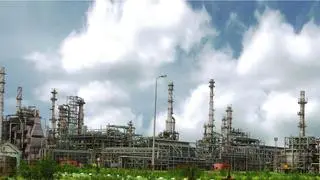India Ratings and Research (Ind-Ra) expects around 45 per cent of total bad loans of Rs 10.2 trillion pertaining to the top 500 debt-heavy corporates, to be resolved by the end of 2018 under the Insolvency and Bankruptcy Code (IBC) Act. The balance is likely to be largely resolved during 2019.
Furthermore, the agency in its report, expects Rs 4.2 trillion of the total stressed debt to become sustainable as an outcome of the resolution process by the end of 2019. According to the analysis, the bad loans include total borrowings of entities within the top 500 borrower universe as of March 2017, with either a credit rating of ‘C’ or ‘D’.
The total stressed debt resolved, including pre-National Company Law Tribunal (NCLT) restructuring or highest bidder identified under NCLT, totalled Rs 0.82 trillion with an average haircut of 43 per cent, lower than the overall estimate of 59 per cent on the entire bad debt portfolio, given some of the resolved bad debt was large-sized assets in iron and steel, and a cement asset with lower haircut.
The agency expects approximately Rs 3.8 trillion of bad loans could potentially be resolved during the remainder of 2018. Of this, about Rs 1.6 trillion debt will become sustainable if the resolution proceeds in line with the defined timelines.
During 2018-2019, Ind-Ra believes Rs 4.2 trillion of the total stressed debt will turn good on resolution. Infrastructure, including power, and the metals and mining sectors, have the most concentrated stressed debt pending resolution, followed by real estate, telecom, and petrochemicals.
The real estate sector may have a high requirement of debt refinancing to avoid falling in the stressed category. While few bad loans relating to metals and mining, cement, and auto and ancillary sectors have been successfully resolved so far.
Ind-Ra classifies stressed categories as entities with credit rating of ‘C’ or ‘D’, entities with interest coverage ratio of less than 1.5x; however, those having strong parent linkages are classified in the refinanceable category. The remaining entities are classified in the ‘good’ category.
It expects the resolution time frame benchmarks to reduce by two years. According to World Bank, India is among the few countries with the longest bad debt resolution turnaround time of 4.5 years. The Reserve Bank of India has been proactive in laying down the resolution time frame in the circular dated February 12, 2018. Going by the success of the resolutions so far, the agency believes the outer line for the timeline could be reduced to about 2-2.5 years, including litigations.
Of the Reserve Bank of India’s first and second lists of NCLT, including about 37 corporates, only three have been resolved within the time frame (first list: 270 days, second list: 180 days) notified. As the process is evolving, the resolution pace is likely to pick up in the next 6-12 months. The agency believes that the success of the Insolvency and Bankruptcy Code (IBC) 2016 lies in substantial reduction of the overall resolution time, which is, in turn, critical for the development of debt capital markets in India.







Comments
Comments have to be in English, and in full sentences. They cannot be abusive or personal. Please abide by our community guidelines for posting your comments.
We have migrated to a new commenting platform. If you are already a registered user of TheHindu Businessline and logged in, you may continue to engage with our articles. If you do not have an account please register and login to post comments. Users can access their older comments by logging into their accounts on Vuukle.